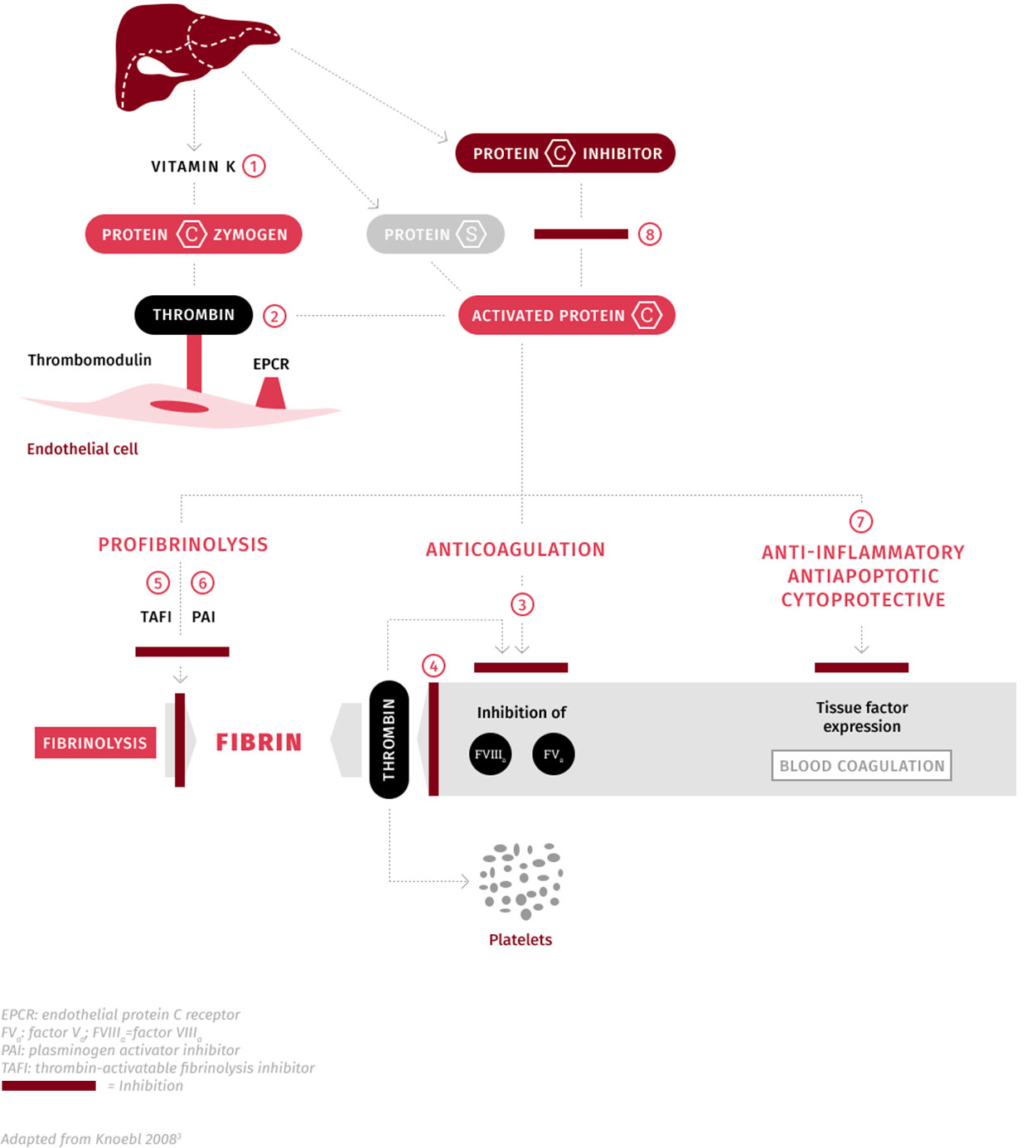
Protein  and Coagulation
and Coagulation
What is the role of Protein C in blood coagulation?
Effective blood coagulation depends on the correct balance and interaction of different pro- and anti-coagulation factors, as well as vessel wall elements and cellular components of the blood.1
Protein C (PC), a naturally occurring vitamin K-dependent anti-coagulant, is an important component of the coagulation cascade.1,2 Its primary role is to regulate the activity of the coagulant thrombin, which, once activated, leads to fibrin formation and blood clotting.1.2
Overview of the activation and role of protein C
- PC is synthesized in the liver as an inactive enzyme precursor known as a zymogen.1
- PC is converted to its active form by forming a complex with the thrombin-thrombomodulin complex on the surface of endothelial cells, facilitated by binding to the endothelial PC receptor (EPCR).1
- Activated PC (APC) inactivates the procoagulation factors Va (FVa) and VIIIa (FVIIIa) that promote the generation of thrombin from its precursor molecule prothrombin.1
- PC activation ultimately leads to thrombin inactivation, thereby inhibiting blood clotting. This inactivation occurs at the location of thrombin formation.1,4
- PC also has an indirect pro-fibrinolytic (i.e., clot breakdown) function as it binds to plasminogen activation inhibitor-1 (PAI-1), thereby increasing the activity of tissue type plasminogen activator (tPA).3
- Due to reduced thrombin generation, the activation of thrombin activatable fibrinolysis inhibitor (TAFI; an inhibitor of plasmin) is diminished as a result of PC activity, thus resulting in increased clot breakdown.1,3
- PC also has anti-inflammatory and cytoprotective functions.1,3
- The half-life of APC in plasma is about 20 minutes. Once formed, it is immediately degraded by the protein C inhibitor (PCI) and α1-antitrypsin and, to a lesser extent, α2-macroglobulin and α2-antiplasmin.1
References:
-
Mosnier LO, et al. Protein C, Protein S, Thrombomodulin, and the Endothelial Protein C Receptor Pathways. In: Marder, VJ, et al. (eds.) Hemostasis and Thrombosis: Basic Principles and Clinical Practice. 6th ed. Philadelphia, PA, USA: Wolters Kluwer Health; 2012.
-
Goldenberg N, Manco-Johnson M. Protein C deficiency. Haemophilia. 2008;14(6):1214–1221.
-
Knoebl PN. Human protein C concentrates for replacement therapy in congenital and acquired protein C deficiency. Drugs of Today. 2008;44(6):429-441.
-
Gale KD. Continuing Education Course #2: Current Understanding of Hemostasis. Toxicol Pathol. 2011;39(1):273-280.

